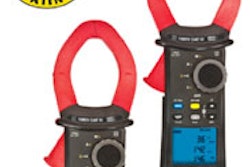Due to the ongoing instability of the incoming power to its plant, one manufacturer of products and therapies for kidney and liver dialysis needed to expand the power protection infrastructure to protect more automation control systems, including 35 robotic systems running day and night.
There are hundreds of thousands of people with kidney and liver problems that rely on state-of-the-art dialysis equipment. Precise manufacturing and quality of these medical devices is paramount to successful patient treatment. Gambro, a global medical technology company and a leader in developing, manufacturing, and supplying products and therapies for kidney and liver dialysis, knows this first hand.
Gambro was founded in Sweden in 1964. The company has production facilities in nine countries with sales in more than 100 countries. Today, the company employees 8,000 people across the globe.
Dialyzers are a key component in a kidney patient's dialysis process. Patients usually undergo three to four hours of dialysis at least three times weekly at an outpatient clinic. These patients' kidneys are unable to perform the normal function of removing waste products and fluid—a function critical to survival. Through dialysis, these waste products are filtered out from the patient's blood through a membrane placed within a filter (dialyzer) that in essence serves as an artificial kidney.
Since 1999, Gambro Renal Products, a part of Gambro Group, has made investments to increase production capacity to about 40 million synthetic dialyzers annually. The company has major dialyzer manufacturing plants in Hechingen, Germany, and Meyzieu, France. Gambro Renal Products’ U.S. manufacturing plant is located in Opelika, Alabama.
The manufacture of the dialyzer, also known as an artificial kidney, has to be of the utmost precision and quality. Gambro is one of three companies in the world that meets the demand of these filters. Any disruption in the sophisticated and automated manufacturing process can result in an eight to 10-hour clean-up and restart process. That’s not acceptable when patients need this life-saving device. When the manufacturing process goes down it’s usually due to a power problem from the local utility. To assure processes keep running smoothly, Gambro depends on efficient uninterruptible power systems (UPSs), as well as clean energy storage solutions.
“Our local utility provider frequently transfers from one power grid to another, causing hiccups in our power supply,” said David Ganus, facilities engineer for Gambro Renal Products. “Running our operations 24x7, producing 40,000 dialyzers per day, power outages, even momentary ones, can bring our whole production line down, costing us a day’s worth of work to get the line back up.”
Due to the ongoing instability of the incoming power to the plant, Ganus needed to expand the power protection infrastructure to protect more automation control systems, including 35 robotic systems running 24x7. While he had good success with the one battery-based UPS system the facility had protecting other equipment, Ganus wanted to explore different options to assure the highest level of operational uptime for his control systems. Unfortunately, due to the facility’s frequent power interruptions, the UPS batteries are cycled frequently, degrading their useful life. Ongoing maintenance, replacement, cooling requirements, and space considerations made batteries a less than optimum solution.
Ganus needed to have a power system in place that could mitigate the frequent power disturbances as continuous production was paramount.
“In my search it was important to find the right systems that could meet our uptime requirements. iIf the system had “green” qualities, that would be icing on the cake,” said Ganus.
This goal led Ganus to research flywheel systems, also known as clean energy storage systems, and learn how they could possibly meet his uptime requirements. In his quest, he found that not all flywheel systems are the same.
“We looked at a couple of vendors of flywheels and found out that with one type you had to replace bearings every few years at almost $10,000 each and bring the system down for six to eight hours,” lamented Ganus. “We wanted a very reliable system with low maintenance and a better overall return on investment.”
This led him to explore the offerings from VYCON.
A flywheel is a mechanical device that stores energy as it spins. To initiate and maintain a flywheel, electricity from the grid is needed, but if the power cuts out, it uses the stored kinetic energy to generate a reliable and predictable source of DC power. With recent advances that have made it more compact and able to support higher power applications, flywheel technology is a highly reliable and environmentally friendly power protection solution that stores energy mechanically instead of chemically – greatly enhancing dependability.
Compared to lead-acid battery-based UPS systems that necessitate expensive air conditioning, require large real estate and are maintenance intensive, flywheels give mission-critical data centers, hospitals, and manufacturing plants a green and predictable backup energy source that help keep vital and critical systems up and running. The latest flywheel designs sold by world-leaders in three-phase UPS systems take advantage of higher speeds and full magnetic levitation, packing more green energy storage into a much smaller package. Over a 20-year design lifespan, cost savings from a hazmat-free flywheel versus a five-minute valve regulated lead-acid (VRLA) battery bank are in the range of $100,000 to $200,000 per flywheel deployed. These figures don’t include floor space or cooling cost savings that can be achieved by using the flywheel energy storage versus batteries.
In evaluating the VYCON VDC-XE flywheel systems, Ganus learned that he did not have to replace costly bearings – a big plus over competing flywheels.
“Space was another concern,” said Ganus. “I was very limited on where I could house the power systems and three battery cabinets wouldn’t fit into our equipment room.”
Besides a smaller footprint compared to batteries, flywheels don’t need special cooling and can operate flawlesslyfrom -4° F to 104° F. Due to the flywheels very quick response time to power anomalies and the fact that 99 percent of the power disturbances Gambro experiences only last seconds, a UPS with flywheel backup was the perfect solution. Providing reliable mission-critical protection against costly transients, harmonics, voltage sags, spikes, and blackouts, the flywheel systems met all of Ganus’ requirements.
“Since we’ve had the UPS and flywheels in place, we’ve experienced several voltage sags from the utility. The UPS and flywheels have performed exactly how they’re supposed to.”
Visit www.vycon.com to learn more.























